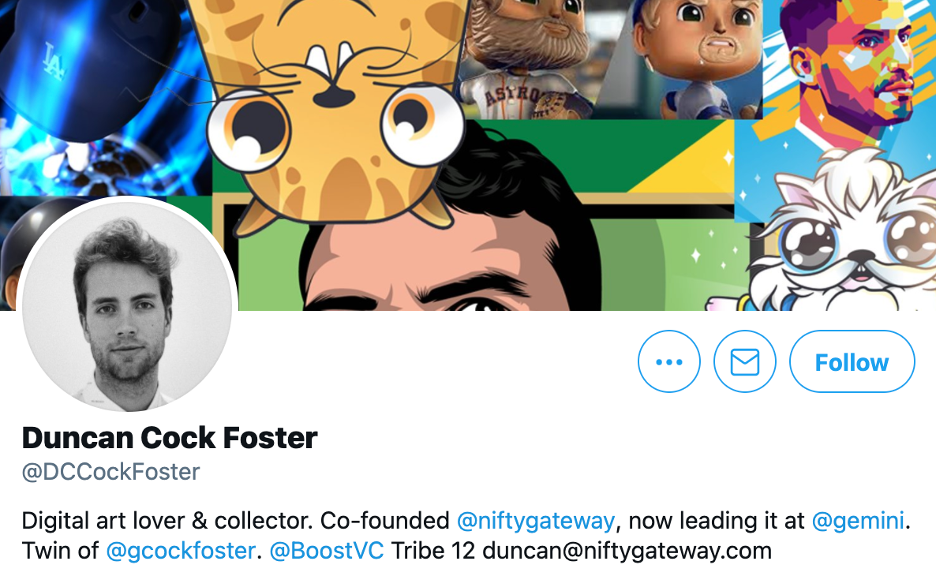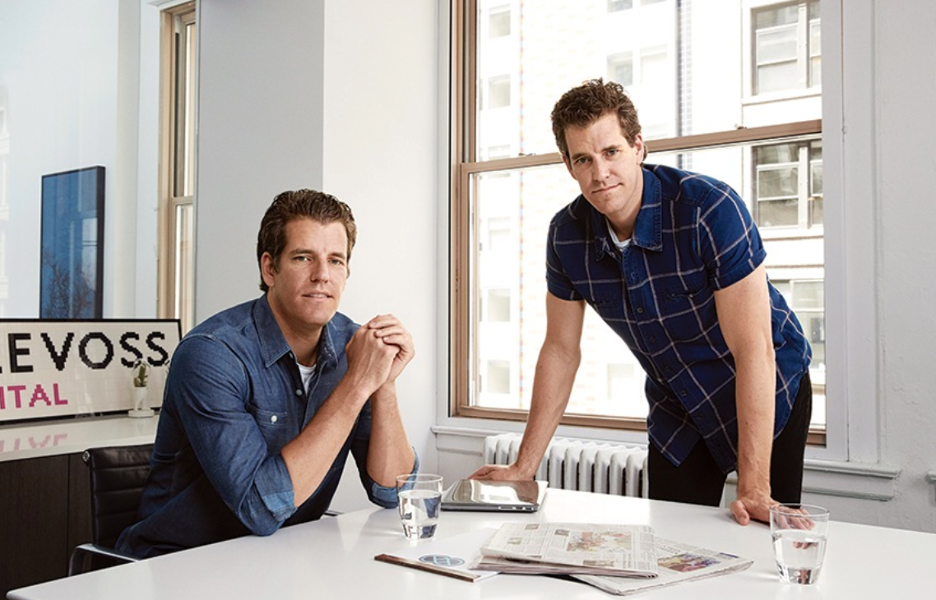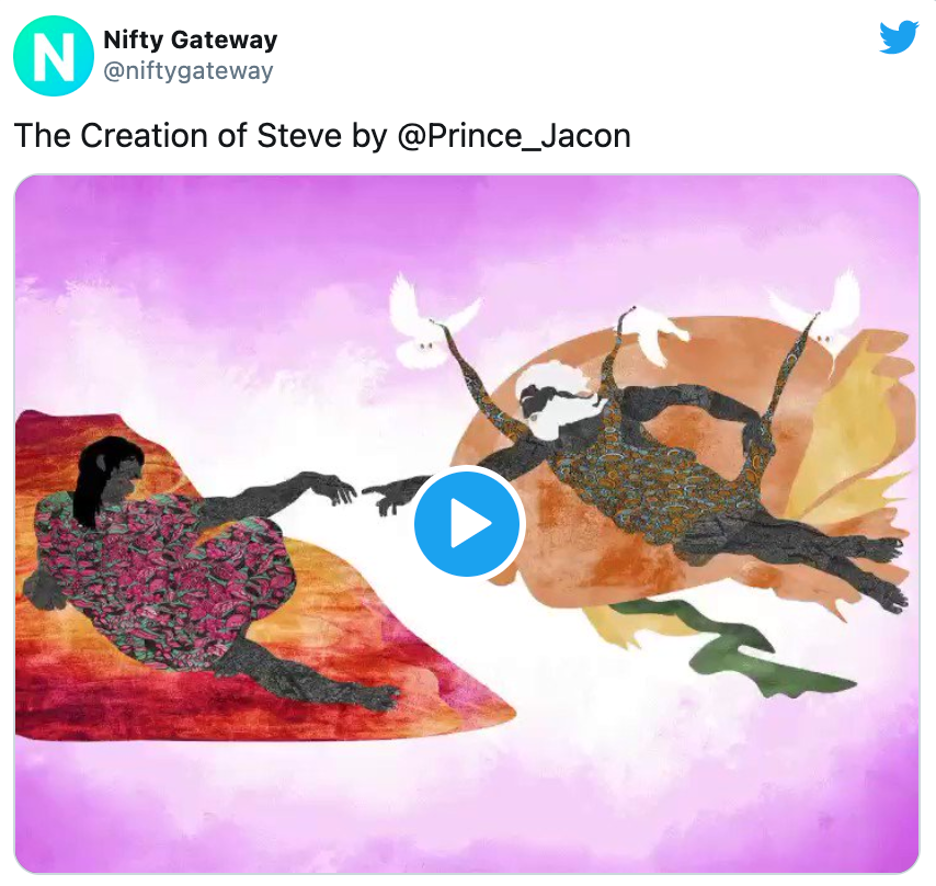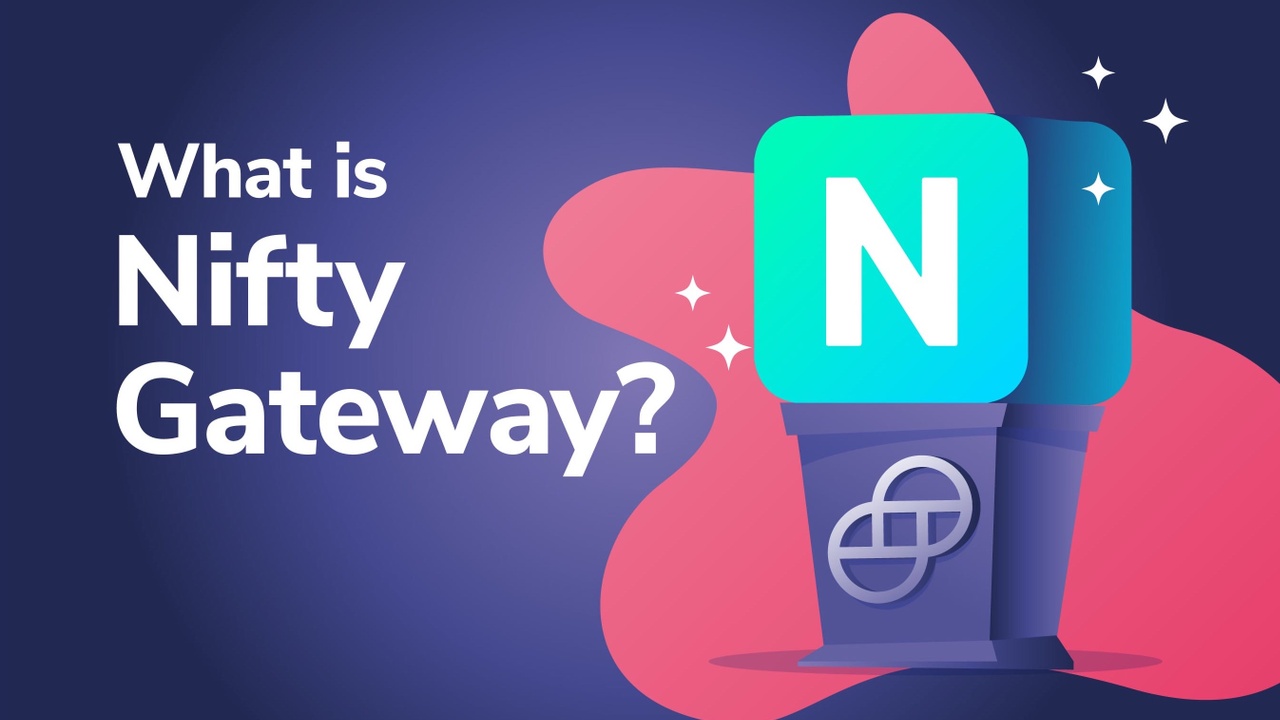
Nifty Gateway is a self-described “premier marketplace for Nifties.” “Nifties” stands for “NFTs,” which stands for “non-fungible tokens.” There are fungible tokens and non-fungible tokens in the world of crypto, but we won’t be explaining their differences in this article. If you want to deep dive into that, first read a brief introduction to the NFT asset class, such as our article “Non-Fungible Tokens – Could NFTs Supercharge The DeFi Sector?“
For today’s article, understand that NFT’s are unique digital assets that represent things like digital art or in-game collectibles. By tokenizing works of art with NFTs, artists can assure collectors that each piece is unique and that the blockchain manages ownership.
If you want to get into the crypto sector and learn more about either crypto, NFTs, or blockchain technology in general, be sure to enroll in Ivan on Tech Academy! Join over 30,000 existing students at one of the premier blockchain academies anywhere in the world.
A Marketplace for Digital Artists
Duncan and Griffin Cock Foster are the twin brothers who founded Nifty Gateway. Certainly, there are other use cases for NFTs, but digital art is primarily what they are all about.
The problem for digital artists is that they’ve never had a way to sell their creations before. It’s always been too easy to rip off. Long excluded from the fine art world of gallery shows, digital artists finally have platforms to showcase their work.
Nowadays, marketplaces like OpenSea, Rarible, SuperRare, and of course Nifty Gateway are flourishing. For an extensive list of NFT marketplaces, check out our article, “The Ultimate 2021 Guide to NFT Marketplaces.”

Do you want to take a deep dive into NFTs? Start with the Crypto Basics course at Ivan on Tech Academy.
NFTs and Digital Art
NFTs are the solution to the woes of the digital artist. With an NFT, ownership and a one-of-a-kind uniqueness can be designated to a piece of art. Think of the token as a digital certificate of authenticity for the artwork. Nifty Gateway co-founder Duncan Cock Foster explains NFTs as a “fundamentally better digital good.”

Digital art refers to art made on a computer program like Photoshop. It can be a flat JPEG file or an animated GIF. While you can’t animate a painting or a print, fine artists can join in by digitizing their paintings via scanning them or with a high-res digital camera. Popular artworks can also be short videos.
Digital artists have always envied fine artists for their ability to monetize their artworks in galleries. So, we’ll see how welcoming they are when fine artists start digitizing their works for NFT marketplaces.
Duncan has said, “If you critically rate what makes art valuable as an asset, which is authenticity, liquidity, and longevity, then nifties blow traditional art out of the water in all three of those categories.” While that’s true, digital art isn’t going to devour fine art. The future is most likely going to be one of coexistence, with each finding their collectors’ niche.
NFT Advantages
One advantage of NFTs is their ability to onboard new users to crypto. While decentralized finance (DeFi) can be too confusing for the average user, NFTs have brought a fun, creative side to the ecosystem that is more accessible to “newbies.” On Nifty Gateway, users can buy NFTs with their credit cards. They don’t even need to know how to use MetaMask. Thanks to easy payments, Nifty Gateway’s art drops sell out quickly. They make it easy for users to collect their favorite artists and brands.
Nifty Gateway’s fees are much lower than a traditional art gallery because their costs are lower. They don’t have to maintain a physical space nor pay for shipping physical products. These kinds of costs can add up, especially at international art shows when all the art has to be shipped to a specific venue. Nifty Gateway, on the other hand, can transfer digital artwork instantly from one person to another.
The Problem with NFTs
While impressive sales figures and cost advantages make for strong demand, there is still plenty of room for improvement in the NFT space.
Not all platforms are as simple as Nifty Gateway. One problem with many NFT marketplaces is they require users to be familiar with crypto wallets like MetaMask. Users also need to know how to purchase ETH from an exchange before buying and selling NFTs.

This ETH requirement brings up the problem of high gas fees. Fees can be upwards of $100 to make a transaction. This does not bode well for artists minting their NFTs nor for collectors wanting to purchase.
Can you imagine going to buy your favorite NFT for $10 only to pay gas fees of $50 or even $100 depending on network congestion? It’s reminiscent of the old days of eBay where super-cheap items were offset by massive shipping costs. Projects like Audius and their Hedgehog wallet seek to alleviate the onboarding costs to new users, but these costs are certainly challenging.
The Cock Foster Twins
Okay, no tedious name jokes, please. I’m sure they’ve heard every type of word twisting combination there is since grade school, so you won’t come up with anything original. What’s important about them is not their name but that they got involved with crypto back in 2017.

Nifty Gateway – Cock Foster Twins
On the first inspection, they were not excited about the financial side of things. But when they discovered NFTs, they found the use case for crypto they were looking for. Furthermore, since there weren’t many NFT companies to work for, they decided to start their own. Hence, the birth of Nifty Gateway.
It was such a small niche that the toughest issue was how to make an NFT technology accessible. Back in those days, it could take a user weeks to set up and start collecting crypto art. It was far too confusing. So, the first order of business was to create a simplified infrastructure to onboard new users.
Not long after the Cock Foster twins built Nifty Gateway, two other twins (albeit a bit more famous) came along and acquired it from them. We’re talking about Tyler and Cameron, the Winklevoss twins who founded Gemini. Their involvement helped turn Nifty Gateway into the hub for digital art that it is today.
Enter the Winklevoss Twins
It makes for a good storyline: twin brothers starting a company later acquired by two other twin brothers. That is a rarity in itself, like the stars aligning or something.

Cameron and Tyler Winklevoss
The Cock Foster twins may be easy to poke fun at because of their name, and the Winklevoss twins may be easy to poke fun at because of their stiff, preppy boy image that hearkens back to some bad 1980s films. But no one can deny either their visionary talents.
The Winklevoss twins have a track record of seeing trends before others. The film The Social Network doesn’t depict them in a flattering light, but it does show how they developed the idea for Facebook before Mark Zuckerberg absconded with it.
Justice was served for the twins eventually, albeit in a roundabout way. They took their hefty lawsuit winnings from Zuckerberg and did some amazing things with it. If you read the book Bitcoin Billionaires, you’ll find how the twins hoped to invest in some Silicon Valley startups. But the “you’ll never work in this town again” syndrome plagued them from the start. Apparently, their lawsuit had ruffled some feathers in big tech tinsel town, and they hit nothing but brick walls.
Goodbye Silicon Valley, Hello Crypto
Thankfully when one door closes, another opens. After leaving Silicon Valley, the twins retreated to the island of Ibiza to reflect and refocus their efforts. That’s where the chance encounter with a Bitcoin aficionado took place. It didn’t take any arm twisting or sales pitches. They “got” Bitcoin right away. And they didn’t just get it; they acted on it big time, bravely purchasing millions of dollars of it when most investors were still terrorized by crypto. After dabbling in startups, they subsequently started the Gemini.
Do you want to build your own crypto company like the Winklevoss brothers? They started by learning about Bitcoin and you can too. Go to the Blockchain and Bitcoin 101 course at Ivan on Tech Academy and get started!
Then, back in 2019, the Winklevoss twins discovered NFTs to be a great use case for blockchain technology. However, rather than trying to create their own platform from scratch, they met the Cock Foster twins and bought into their creation.
People love to collect things, and now they can collect digital art. So, the Cock Foster twins happened to be at the right place at the right time. The work they had done to simplify their UX paid off handsomely, and the Winklevoss twins had a project they could invest in.
Gemini and Nifty Gateway
Collecting digital art is an idea whose time had come, and with Gemini’s technology and capital, Nifty Gateway could build out in ways they couldn’t have on their own.

The Cock Foster twins next made a move to New York’s Flatiron District. Not only to access Gemini’s heavy-duty technology but also to be closer to New York’s art collectors. Los Angeles may be the center of the art world where freedom and creative expression is concerned, but New York still has a superior collector base. Within a year of the acquisition, it’s plain to see that the integration is working well.
Digital Art Critics
Digital art is not without its critics. Some say digital art can never replace the experience of reaching out and touching a real piece of physical art. Besides having nothing tangible to own, others complain that it’s just one screenshot away from copycatting. However, people’s perception of this is arguably changing thanks to NFTs.
If you think about it, anyone can take a photo and digitally copy a Rembrandt painting. But that would not diminish the value of the original Rembrandt. Someone could have a copy of a Rembrandt hanging on their wall at home for free. So what?

Anyone can take a screenshot of an original digital piece, but they will not own that original. Thanks to NFTs, owners can prove authenticity. In fact, the more people download and share digital art on social media, the more popular it becomes and the more valuable the NFT becomes.
Thus, NFTs are the missing piece the digital art world needed to empower and compensate artists. And even the critics will get more used to digital art over time.
Top Selling Digital Artists
The artist who created it is the number one determining factor for how well a piece sells. Beeple is one of the most famous digital artists, with millions of social media followers and millions of dollars in NFT sales. His niche is “everydays.” He creates a new piece of digital art every day. But Nifty Gateway has other big sellers like Trevor Jones selling in the millions as well. The key for both is they have strong collector bases.
NFTs and Art Drops
Another key to their success is that Nifty Gateway has managed to facilitate digital art drops in the same way the Supreme fashion brand does. The Supreme style of art drop is a great way to create excitement. The only downside is the technical issues that pop up from wild traffic swings that can spike 100x when the drop kicks off.

NFTs and Secondary Markets
One of the best things about NFT marketplaces for artists is the secondary market sales. When an artist sells a piece of work on Nifty Gateway, they get to determine what percentage they want from future sales. This is a game-changer for all artists.
It means that if an artist sells a piece for $25 initially, but later they become famous, and the piece gets resold for $200,000, they get a percentage of that sale. This is huge and does not happen in the traditional art world. If the artist in the example above set their percentage to 10%, they would earn $20,000 from the secondary sale!
Imagine what NFTs could do for other artists like musicians or authors. Wouldn’t it be great to write a book and get a percentage each time it’s resold? That’s quite different from the present-day Amazon model.
Who’s Investing in NFTs?
With Bitcoin and Etherium prices hitting all-time highs, investors are motivated to search out new crypto areas to allocate their capital. This may be the reason why the majority of crypto art buyers appear to be speculators. They’re buying so they can later flip their NFTs for big profits.
Regardless, NFTs are still only a tiny fraction of the worldwide art market. So the drive to collect art or connect with the artist from the physical world will no doubt translate to the digital as time goes on.
The Future of NFTs
There are many unexplored use cases for NFTs that will arise in the future. Tyler Winklevoss has been doing deals with Esports brands and believes that sector has tremendous growth potential. There are use cases but one of the more exciting possibilities resides with DeFi.

DeFi platforms like Superfarm have some exciting things planned. And certainly, the number of virtual worlds popping up that allow people to show off their NFT collections is also interesting. Projects like CryptoVoxels and Decentraland come to mind in that arena.
The possibilities are endless, and we’re only at the beginning. So, if you want to participate in the future now, don’t just sit on your hands and watch from the sidelines. Do like the Winklevoss twins and take action early. Get started with your blockchain education today at Ivan on Tech Academy!
Author MindFrac





